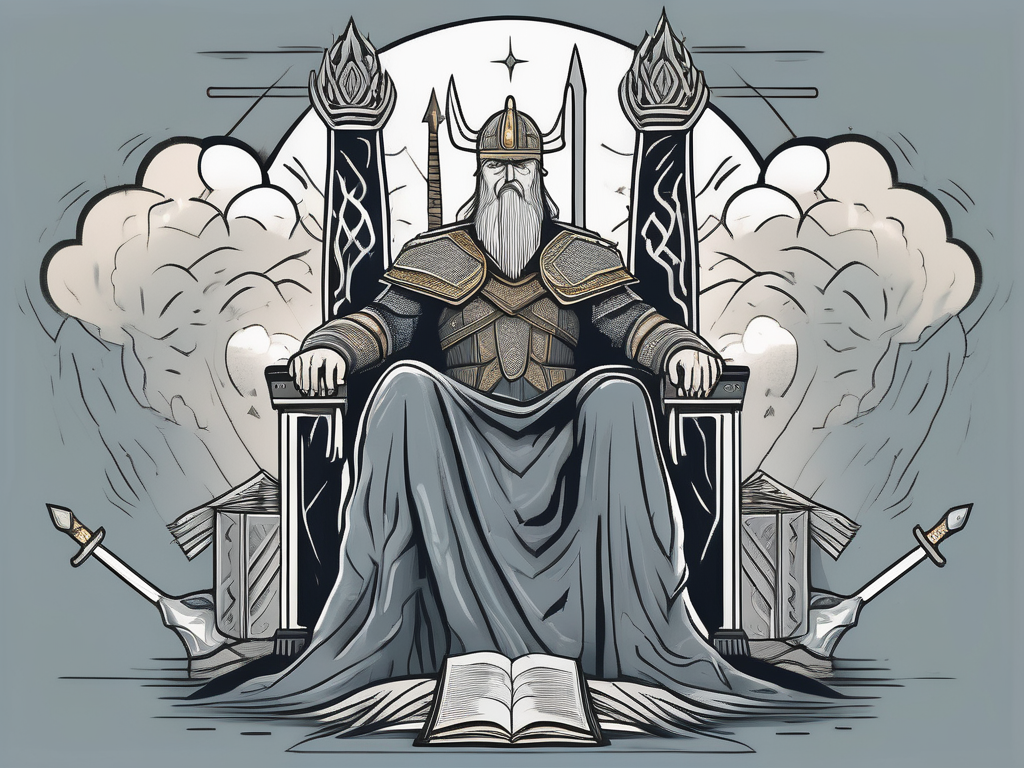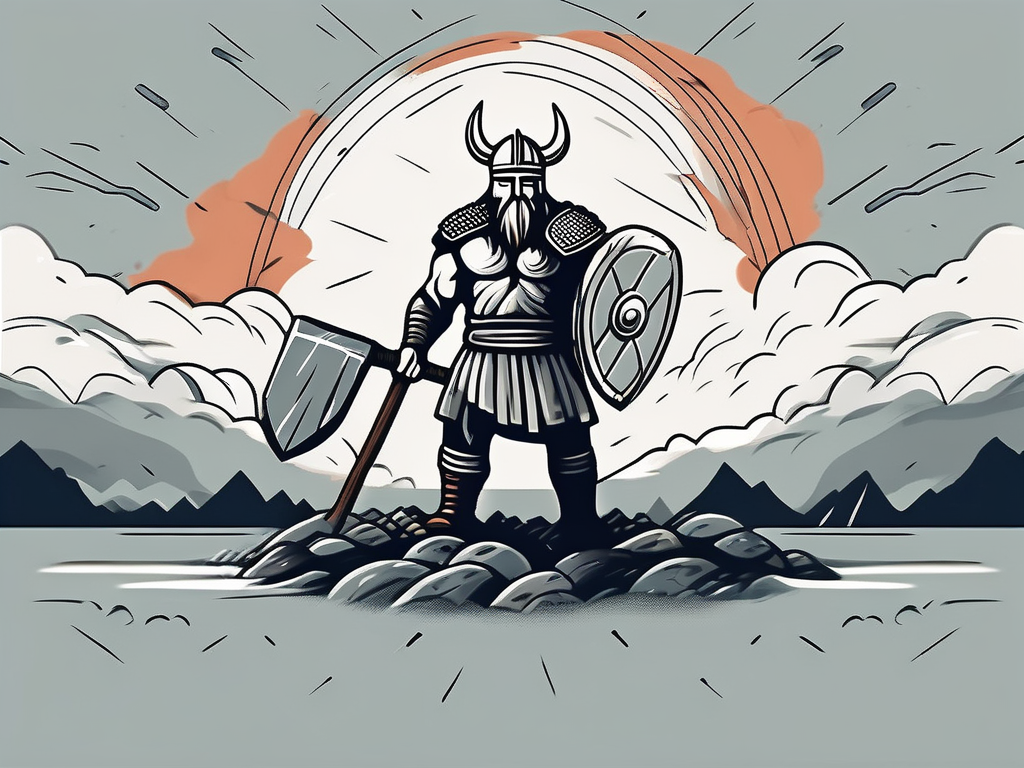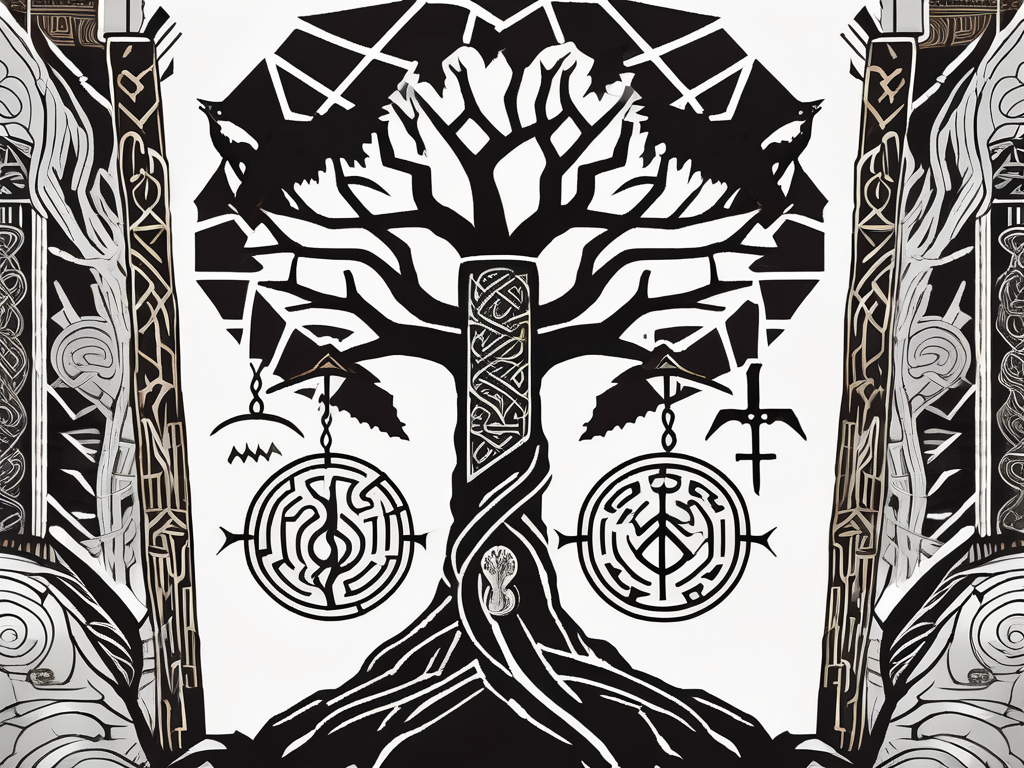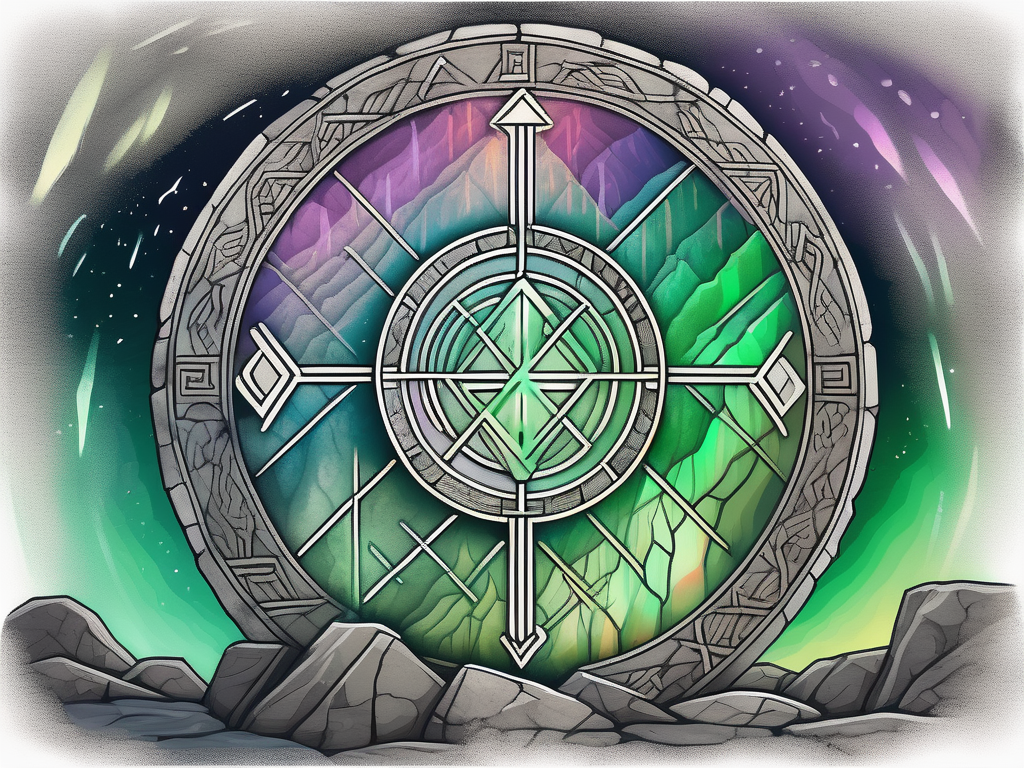Have you ever wondered about the fascinating world of Norse mythology? If so, then you have surely come across Odin, the mighty god of wisdom and war. In this article, we will dive deep into the realms of Norse mythology and explore the enigmatic figure of Odin, uncovering his symbolic associations, his dual nature as the god of both wisdom and war, his captivating mythological tales, his prominent influence on modern culture, and the worship and rituals devoted to this revered deity. So, grab your horns and brace yourself for an epic journey through the realm of Odin!
Understanding Odin: An Overview
Before we delve into the depths of Odin’s realm, let us first gain a broad understanding of this awe-inspiring god. Odin, also known as Allfather, is one of the most prominent figures in Norse mythology. He reigns supreme as the chief deity of the Norse pantheon, presiding over Asgard, the realm of the gods. As we venture further, we will discover the pivotal role Odin plays in the rich tapestry of Norse mythology and his extensive list of symbolic associations.
Odin’s presence in Norse mythology is not limited to his position as the ruler of Asgard. He is a complex and multifaceted deity, embodying various aspects that make him an intriguing figure. One of the key roles Odin assumes is that of the god of wisdom, knowledge, and poetry. His insatiable thirst for knowledge knows no bounds, driving him to make personal sacrifices in his quest for ultimate wisdom. This relentless pursuit of knowledge sets him apart from other gods and showcases his intellectual prowess.
Furthermore, Odin’s significance extends beyond his role as the god of wisdom. He is a crucial figure in the looming prophecies of Ragnarok, the apocalyptic battle that signifies the end of the world as we know it. As the ruler of Asgard, Odin plays a vital part in preparing for this cataclysmic event. He gathers fallen warriors in his majestic hall, Valhalla, to train them for the ultimate battle against the forces of chaos and destruction.
The Role of Odin in Norse Mythology
Odin occupies a central place in the intricate web of Norse mythology. He is revered as the god of wisdom, knowledge, and poetry. Odin’s thirst for knowledge knows no bounds, driving him to make personal sacrifices in his quest for ultimate wisdom. Moreover, Odin is a crucial figure in the looming prophecies of Ragnarok, the apocalyptic battle that signifies the end of the world as we know it.
As the god of wisdom, Odin possesses a deep understanding of the universe and its workings. He is associated with the acquisition of knowledge through various means, including the runes. According to myth, Odin discovered the runes by hanging himself from the world tree, Yggdrasil, for nine days and nights, pierced by his own spear. This self-sacrifice granted him profound insight into the mysteries of the universe and the power to wield the runes, which became a vital tool for divination and magic.
Odin’s role in Ragnarok is equally significant. As the ruler of Asgard, he is responsible for leading the gods into battle against the forces of chaos and destruction. Odin’s wisdom and strategic prowess are crucial in this final confrontation, as he seeks to maintain order and protect the realms from annihilation. His actions during Ragnarok demonstrate his unwavering commitment to the preservation of the cosmos, even in the face of impending doom.
Odin’s Symbolic Associations
Symbolism weaves a compelling narrative around Odin, enriching his character and leaving an indelible impression on Norse mythology. This revered deity is encompassed by a tapestry of symbolic associations, including the iconic depiction of him as the one-eyed god, sacrificing an eye in exchange for a draught from the Well of Wisdom. This sacrifice represents Odin’s unwavering dedication to acquiring knowledge and his willingness to make personal sacrifices for the greater good.
In addition to his one-eyed depiction, Odin is closely associated with ravens and wolves. These creatures play significant roles in Norse mythology and are deeply intertwined with Odin’s persona and the tales that surround him. Two ravens, Huginn and Muninn, meaning “thought” and “memory” respectively, perch on Odin’s shoulders, serving as his eyes and ears in the realms. They fly across the world, gathering information and delivering it to Odin, further enhancing his wisdom and knowledge. Similarly, Odin is often accompanied by two wolves, Geri and Freki, who represent his fierce and loyal companions in the face of adversity.
These symbolic associations not only add depth to Odin’s character but also provide a visual representation of his attributes and qualities. They serve as reminders of his wisdom, sacrifice, and the intricate web of connections he weaves throughout the realms of Norse mythology.
The Dual Nature of Odin: Wisdom and War
Odin’s multifaceted nature adds a mesmerizing dimension to his character, as he embodies both the traits of a wise sage and a fierce warrior. Let us now explore the facets of his nature that make him shine as the god of wisdom and the god of war.
Odin as the God of Wisdom
Odin’s insatiable thirst for knowledge sets him apart as the god of wisdom in Norse mythology. In his relentless pursuit of understanding, he seeks enlightenment through various means, even resorting to self-sacrifice. This wisdom, gained through arduous trials, empowers Odin, making him the ultimate source of guidance and inspiration for mortals and gods alike.
Odin as the God of War
Beyond his role as the god of wisdom, Odin is also renowned as the god of war. The fury of battle rages within him, and he is always prepared to lead his valiant warriors onto the battlefield. The renowned Valkyries, soaring through the skies, are said to be under his command, guiding warriors to Valhalla, the hall of the fallen where heroes are granted eternal glory.
The Mythological Tales of Odin
Odin’s persona comes alive through a captivating tapestry of mythological tales that have enthralled generations. Let us embark on a journey through some of the most significant and enthralling sagas connected to this legendary god.
Odin’s Quest for Knowledge
One of the most famous tales concerning Odin revolves around his quest for wisdom. In this tale, Odin discovers the Well of Wisdom, guarded by the giant Mimir. In order to taste the well’s transformative waters and gain profound knowledge, Odin willingly sacrifices one of his eyes. This sacrifice serves as a testament to Odin’s unwavering commitment to acquiring knowledge, even at great personal cost.
Odin’s Role in Ragnarok
When discussing Odin’s mythological tales, it is impossible to overlook his crucial role in Ragnarok, the cataclysmic battle marking the end of the world. Predicted to be a fierce and devastating conflict, Ragnarok plunges the cosmos into chaos, where gods and mythical creatures face their ultimate fates. Odin’s participation in Ragnarok shape-shifts his legacy and positions him as a pivotal figure in the eventual rebirth of the world.
Odin’s Influence on Modern Culture
Even in our contemporary world, Odin’s gripping tales continue to leave an indelible mark on various forms of art and literature. From classic books to blockbuster films, Odin’s influence can be felt far and wide.
Odin in Literature and Film
Odin’s character often takes center stage in literature and films inspired by Norse mythology. Whether it is his enchanting portrayal in works like J.R.R. Tolkien’s “The Lord of the Rings” or his epic appearance in recent Marvel films, Odin’s presence is deeply embedded in popular culture, captivating the imagination of millions around the globe.
Odin’s Impact on Modern Paganism
Beyond the realms of entertainment, Odin continues to hold a prominent place in modern pagan practices. As a figurehead in Norse paganism, Odin is revered as a guide and guardian, with rituals and ceremonies dedicated to his worship still being performed today. His sacred symbols, laden with meaning, serve as a connection to the divine and a gateway to ancient traditions.
The Worship and Rituals of Odin
Throughout history, followers of Odin have engaged in worship and rituals, paying homage to their powerful deity. Explore the ancient practices and beliefs that have endured through the ages.
Ancient Practices and Beliefs
In ancient times, devoted followers of Odin would participate in elaborate rituals, including sacrifices, in their quest to connect with the divine. These rituals encompassed various forms, from ecstatic trance to communal feasting, solidifying the bond between mortals and their god.
Odin’s Sacred Symbols and Their Meanings
The worship of Odin also revolves around sacred symbols that hold significant meaning. The valknut, a threefold knot, is closely associated with Odin and serves as a symbol of protection, guidance, and the cycle of life. The raven and the wolf further embody Odin’s associations with wisdom and war, acting as totems of power and intuition for his followers.
In conclusion, the realm of Norse mythology is replete with captivating deities, but none are quite as enigmatic and influential as Odin. From his multifaceted nature as the god of wisdom and war to his mythological tales that captivate the imagination, Odin’s legacy is as vast and enduring as the cosmos itself. As we traverse the realms of ancient worship and rituals dedicated to him, we are reminded of the lasting impact Odin holds on modern culture. So, let us raise our horns in tribute to the Mighty Odin, the god who embodies both wisdom and war, and continues to mesmerize us with his ancient power.












